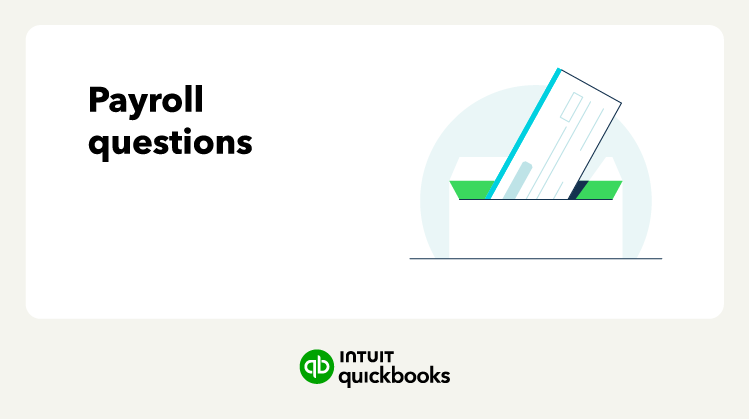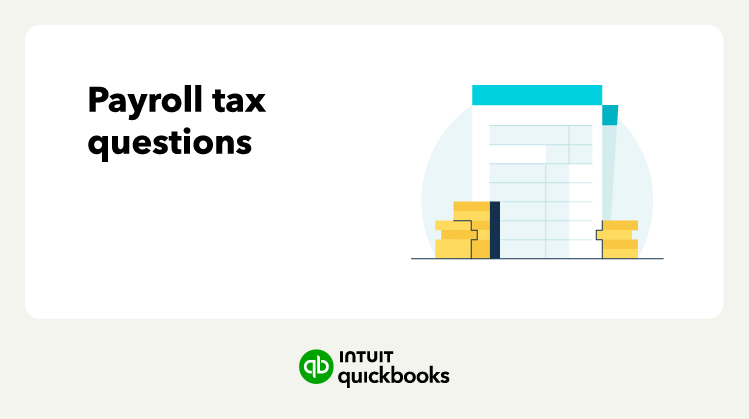11. How do I calculate payroll taxes?
Calculating payroll taxes can seem confusing at first, but if you follow the steps, it all makes sense and comes together in the end.
- To figure out payroll taxes, you’ll need to have the information each employee provided on their Form W-4 , as well as the latest state and federal tax requirements.
- Using the latest federal and state tax tables, find the tax amounts for the employee’s wages.
- Subtract the tax amounts from the employee’s gross wages.
- Move the taxed amount into an account specifically for paying payroll taxes.
Using IRS Publication 15-T, you can find the best method to determine taxes based on how you’re running payroll (automated or manually). There are some differences between W-4s from before and after 2019 to be aware of.
These forms combine information from a W-4 and federal tax tables to help you determine the proper amounts to withhold from an employee’s check. The IRS provides resources for businesses and individuals to determine tax withholdings.
Filling out these forms manually can be time-consuming, and there is a risk of making mistakes, especially if you are new to calculating payroll taxes. Luckily, some paycheck calculators use the latest tax tables to make the process go faster.
Preparing payroll taxes isn’t always easy, and everyone makes mistakes. If you’re calculating taxes on your own, you could face steep penalties for what might seem like small gaffes.
When you use certain brands of payroll software or hire a payroll processing team, they may provide you with tax penalty protection. This protection means that they assume responsibility for mistakes. That peace of mind (and a reduced workload for you) are good reasons to consider getting professional payroll help.
12. What is an EIN and does my business need one?
Payroll is full of acronyms. One of the most important ones you need to remember as an employer is EIN. What is an EIN? It’s an Employee Identification Number. The IRS uses this number to identify a business. You can think about it almost like an SSN for a business.
The IRS recommends most businesses get an EIN. If you’re a sole proprietor, you don’t need one, but it can help protect your personal information and make it easier to separate personal finances from business finances, apply for credit for your business, and make paying taxes more simple.
If your business meets any of these criteria, you’ll need to apply for an EIN if:
- Your company employs people
- You have a partnership or corporation
- You’ll file (or have filed) tax returns for: alcohol, tobacco, firearms, employment, or excise
- Your company withholds taxes on income paid to noncitizens
- You are involved in a trust (there are some exceptions for certain exempt organization business income tax returns),
- You are involved in grantor-owned revocable trusts, IRAs, or estates
- You are involved in plan administrators
- You are involved in agricultural cooperatives
- You are involved in real estate mortgage investment channels
- You are involved in nonprofit organizations
- You want to open a bank account in the name of your business
- You want to apply for a credit card in the name of your business
- You want to apply for business permits
- You want to apply for a business license
- You want to apply for a business loan
- You want to furnish independent contractors with a Form 1099
You can apply for an EIN online through the IRS. Applying for and receiving an EIN is free.
13. What taxes do I need to take out of an employee’s check?
When running payroll, you’ll have to take out the following taxes from your employees’ gross pay:
- Federal income tax
- Federal Insurance Contribution Act (FICA) taxes: This covers Social Security and Medicare contributions
- State income taxes (if applicable)
- State unemployment tax (if applicable)
Payroll software or payroll processing providers will make determining payroll withholdings easier.
14. When does my business need to send in payroll taxes?
You’ll need to pay payroll taxes either monthly or semiweekly, depending on how much you paid during the lookback period. If you paid less than $50,000 during the corresponding lookback period, you’ll pay monthly. If you paid more than $50,000 during the lookback period, you’ll pay semiweekly. IRS Publication 15 covers these tax dates in more depth.
15. Which tax forms does my business need to send in?
You’ll need to send in all tax forms, but they aren’t all due at the same time. Some small business tax forms have one due date each year, while others are due multiple times.
16. What is an exempt employee vs. a non-exempt employee?
An exempt employee is classified as exempt because they’re usually in a supervisory, administrative, or other professional role and aren’t entitled to overtime pay. If they’re classified properly, their salary must reach or exceed a minimum amount.
An employee is non-exempt if they are paid by the hour and can receive overtime pay or if their salary is below a threshold set by The Department of Labor. These positions are required to make at least minimum wage.
Correctly classifying your employees isn’t just important for collecting the right tax amounts and paying your people correctly. It also protects your business from fines and even lawsuits. If you aren’t sure if someone is an exempt vs. a nonexempt employee, check with the IRS.
17. Do I pay contractors in the same way as other employees?
No. Because a contractor is not one of your employees, you don’t pay them like you would an employee. How is payroll calculated differently for contractors? First, you don’t deduct taxes from their gross wages because they are responsible for paying their own taxes on the wages they earn. Second, you (the business owner) aren’t responsible for paying any FICA tax for the wages paid to a contractor.
There are some very specific requirements you need to follow when working with contractors to ensure you aren’t misclassifying an employee, so if you aren’t sure how to hire an independent contractor, consider speaking to a lawyer or an accountant.














